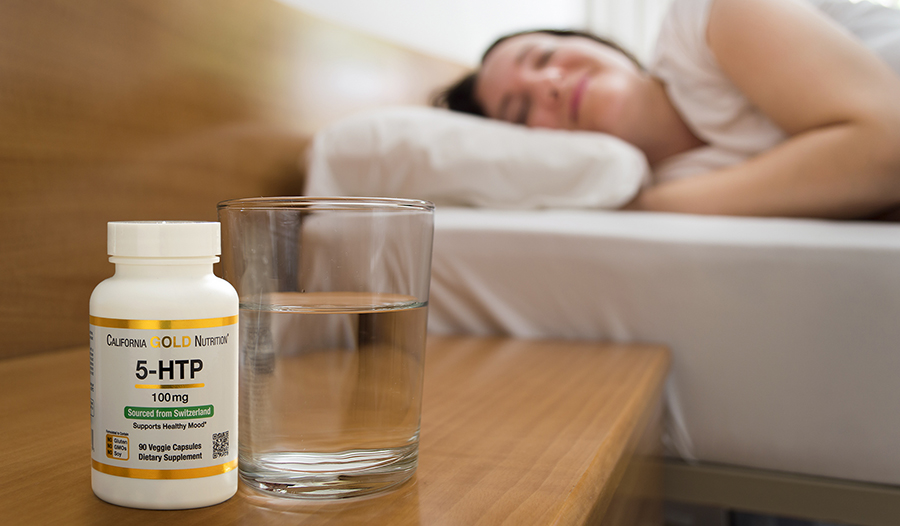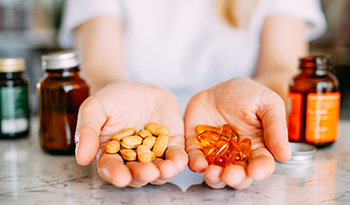Serotoninden Melatonin Yapıyoruz: İşte Bu Neden Önemli

Müşterilerimle yaptığımız en yaygın konuşmalardan biri uyku ve bunun ışık, zaman, yemekler, hareket ve daha da önemlisi ruh halimizden nasıl etkilendiği hakkındadır. Çoğu zaman, müşterilerim serotonin ile melatoninarasındaki bağlantıyı ve uyku için neden önemli olduğunu öğrenince şok olurlar. Bu makalede, bu nörohormonların her ikisini de ele alacağız ve onları doğal olarak nasıl yapabileceğinizi veya en iyi gece uykunuzu almanıza yardımcı olmak için takviye olarak alabileceğinizi ele alacağız.
Melatonin Serotoninden Yapılır
Melatonin, yani “uyku ve antioksidan hormonu”, aslında mutlu ve sakin hissetmemize yardımcı olan nörohormon olan serotoninden yapılır.
Bunu duyunca şaşırırsan, yalnız değilsin!
Müşterilerimin çoğu bu ilişkinin var olduğunu duyunca şok oldu. İlk soruları genellikle şudur: “Peki, bu yeterli serotoninem yoksa melatonin üretemeyeceğim anlamına mı geliyor?”
Cevap, evet! Bu nedenle melatonin üretimini ve uykuyu optimize etmeye çalışıyorsanız serotonin üretimini optimize etmek çok önemlidir.
Gerçek şu ki, yiyecek ve yaşam tarzını kendi yararınıza nasıl kullanacağınızı biliyorsanız, bu kimyasallardan herhangi birini yapmak için ilaç veya takviye almanıza gerek yok. Yeterince serotonin ve melatonin aldığınızdan emin olmak için takviyeler alırsanız, bunu yapmanın doğru ve yanlış bir yolu vardır.
Melatonin Nedir ve Nasıl Yapılır?
Melatonin , iyi fiziksel iyileşme ve uzun ömürlülük ile bağlantılı olabilecek güçlü bir antioksidan ve anti-enflamatuar bileşik olarak hareket etmek de dahil olmak üzere birkaç ana işlevi olan epifiz bezi tarafından üretilen bir nörohormondur. Melatonin ayrıca insanların mevsimlerin değişimini biyolojik olarak yönetmelerine yardımcı olur ve hatta jet lag tedavisine yardımcı olabilir. İyi bir gece uykusu almak için de kesinlikle gereklidir.
Melatoninin yapıldığı epifiz bezi, beynin her iki yarım küresinde bulunur. Memelilerdeki birincil rolü uyku/uyanıklık döngüsünü düzenlemektir.
Epifiz bezi retinanızdaki fotoreseptif hücreler tarafından uyarılır. Işığı “gördüğünüzde”, sirkadiyen ritminizi oluşturmak için gözlerinizden omuriliğinize ve beyninize kadar elektriksel bir olay zincirini harekete geçirir. Epifiz bezi, uyanık ve uyanık kalmanıza veya sakinleşmenize ve kaliteli dinlenmenize izin veren kimyasallar üretmek için sirkadiyen ritminizle birlikte çalışır.
Birçok insan sirkadiyen ritminizin kelimenin tam anlamıyla çevrenizle bağlantılı olduğunun farkında değildir ve sıcaklığa ve ışığın mevcudiyetine bağlı olarak kendini değiştirir.
Epifiz bezinin içinde sihrin gerçekleştiği yer. (Şaka yapıyorum, bu sihir değil - bilim!) Epifiz bezi serotonin hormonunu alır ve onu N-Asetilserotonine dönüştürmek için enzimler kullanır. Bu enzimler karanlık tarafından uyarılır. Gözleriniz ışığa maruz kalırsa dönüşüm gerçekleşemez.
Karanlık kalmaya devam ederse, N-Asetilserotonin melatonine dönüştürülür ve bu da uykuyu tetiklemeye yardımcı olur. Ne kadar çok serotonininiz varsa, koşullar doğru olduğu sürece beyniniz o kadar fazla melatonin üretebilir.
Buradaki çıkarım şu ki, beyninizde yeterince serotonin varsa, onu melatonine dönüştürmek için karanlık ışığı kullanabilirsiniz, bu da uyumanıza yardımcı olur.
Serotonin Nedir?
Serotonin, beynin sağlıklı çalışması için gerekli olan bir nörohormondur. Son birkaç yılda serotonin, depresyon için yaygın olarak reçete edilen Seçici Serotonin Geri Alım İnhibitörlerinin (SSRI'lar) prevalansı nedeniyle “popüler” bir hormon haline gelmiştir. Bu ilaçlar, ruh halimizi dengelemede ve yumuşatmada serotoninin öneminden bahseder.
Serotonin, amino asit triptofan ve B12vitaminlerinden ve BH4'ten (folat ve B12 vitamini kullanılarak yapılan tetrahidrobiopterin) yapılan bir hormondur.
Bu vitaminlerden bazılarını diyetinizle kolayca alabilirsiniz. Örneğin, folat siyah gözlü bezelye, ıspanak ve sığır karaciğerinde bol miktarda bulunur ve B12 genellikle sığır karaciğerinde, çeşitli deniz ürünlerinde, besleyici mayada, sütte ve yoğurtta bulunur. Bir amino asit olan triptofan, proteinbakımından yüksek gıdalarda bulunur. Vegan veya vejeteryan iseniz, yeterli triptofan alımını sağlamak için protein açısından zengin gıda alımınızı artırmaktan faydalanabilirsiniz.
L-triptofanı diyet takviyesi olarak veya daha iyisi 5-hidroksitriptofan veya 5-HTPolarak bilinen bir triptofan formu olarak alabilirsiniz. 5-HTP serotonine L-triptofandan bir adım daha yakındır. Klinik araştırmalar, 5-HTP'nin serotonine daha verimli dönüşüm sağladığını ve ruh halini artırmada ve uykuyu iyileştirmede daha iyi sonuçlar verdiğini gösteriyor.
Takviye almayı seçerseniz, önce doktorunuza danışın, çünkü 5-HTP birçok ilaçla etkileşime girebilir ve hatta serotonin sendromuna neden olabilir.
Serotonin ne yapar?
Daha önce belirtildiği gibi, serotoninin birincil görevi ruh halimizi kontrol etmektir. Ayrıca hafızada bize yardımcı olur ve hatta endokrin ve metabolik süreçleri destekler. Tabii ki serotonin, sağlıklı uyku için kritik olan melatonin oluşturmak için de gereklidir ve buna karşılık ruh halimizi iyileştirmeye yardımcı olur!
Dinlenme, beyin fonksiyonu ve ruh hali çok yakından bağlantılıdır ve araştırmacılar bu karmaşık ilişkiler hakkında her zaman daha fazla şey öğreniyorlar.
Melatonin Üretimini Teşvik Eden Uyku Hijyeni
Vücudunuz yeterli serotonin üretebiliyorsa, uygun şekilde dinlenmeniz için melatonin üretebilir. İşin püf noktası, serotonini melatonine dönüştürmek için gereken enzimlerin karanlıkla aktive olmasıdır - yani beyninizin doğal olarak melatonin yapmasını istiyorsanız, uyumayı planlamadan önceki 30 dakika içinde gözlerinizi ışığa maruz bırakamazsınız.
Bu bilimle çalışmak kolaydır. Yatmadan önceki yarım saat boyunca dizüstü bilgisayar ve telefon ekranlarının verdiği ışık türü olan mavi ışıktan kaçının. Bunun nedeni, mavi ışıkların serotonini melatonine dönüştüren enzimleri özellikle kapatmasıdır.
Şahsen, dizüstü bilgisayarımda çalışmak için oturduğumda mavi ışıklı gözlük takıyorum ve akşam yemeğinden sonra ekranlardan tamamen kaçınmaya çalışıyorum. (Herhangi bir nedenden dolayı geç saatlere kadar çalışmam gerekiyorsa, gözlükler tekrar açılır!)
Ayrıca parlak beyaz veya floresan tavan lambalarından da kaçınmalısınız. Akşamdan sonra, evinizi aydınlatmak için gerekirse mum ışığı veya sarı renkli ışıklar kullanmanızı ve ışıkları olabildiğince loş tutmanızı öneririm. Tuz lambaları, görmeniz gerektiğinde, ancak melatonin üretimini engellemeyecek sarı/turuncu renkli bir ortam istediğinizde gece için harika bir seçenektir.
Anlayabileceğiniz gibi, serotoninden yeterince melatonin üretmek için doğru zamanda hizalanması gereken birçok önemli faktör vardır. Yatmadan önce ışıklardan kaçınamadığınız günlerde, melatonin takviyesi almak, bu süreci atlatmak ve beyninizin kaliteli uyku işine başlamasına yardımcı olmak için iyi bir seçenek olabilir. 1-3mg genellikle beyninize rahatlama zamanının geldiğini bildirmeye yardımcı olmak için yeterlidir.
Takviyeyi uygun şekilde kullandıktan sonra hala uyumakta zorlanıyorsanız, melatonin eksikliği muhtemelen sorun değildir ve doktorunuzla diğer seçenekler hakkında konuşmalısınız. Her zaman olduğu gibi, sizin için doğru ve güvenli olduklarından emin olmak için herhangi bir yeni takviye almadan önce kalifiye sağlık uzmanınıza danışın.
Son olarak, ışığa maruz kalmayı kontrol edemediğiniz bir ortamdaysanız, çalar saatlerden, pencereden gelen sokak lambasından veya diğer küçük, gece rahatsızlıklarından gelen ışığı engellemek için bir göz maskesi kullanın.
Bu Yazıdan Çıkarabileceklerimiz
Bu makaleden bir şey çıkarırsanız, umarım şudur: Doğru yaklaşımı kullanırsanız doğal olarak kendi melatonininizi yapabilirsiniz.
Kendinize serotonin üretmek için yeterli besin sağlayarak ve dizüstü bilgisayarınızı kapatarak, işten sonra e-postanızdan çıkış yaparak ve yatmadan önce 30 dakika veya daha fazla yumuşak ışıkta dinlenmenize izin vererek vücudunuza doğal olarak iyi uyumanıza yardımcı olması için en iyi şansı verirsiniz ve iyi bir gece uykusu, gündüz harika, enerjik, üretken benliğiniz olmanızı sağlar!
Referanslar:
- Bamalan OA, Al Khalili Y. Fizyoloji, Serotonin. [Güncelleme tarihi: 25 Mart 2021]. İçinde: StatPearls [İnternet]. Treasure Island (FL): StatPearls Yayıncılık; 2021 Ocak-. Erişim: https://www.ncbi.nlm.nih.gov/books/NBK545168/
- Henry, Kathryn. “Beyin tipinize göre doğru yiyin.” Dr. Kate Henry. https://www.doctorkatehenry.com/eatrightbraintype Erişim tarihi: 19 Aralık 2021.
- Foster, Russell G. “Melatonin.” Güncel Biyoloji. Cilt 31, Sayı 22, 2021. https://doi.org/10.1016/j.cub.2021.10.029.
- “Epifiz Bezi ve Melatonin.” Colostate.edu, 2018, www.vivo.colostate.edu/hbooks/pathphys/endocrine/otherendo/pineal.html. Erişim tarihi: 5 Ocak 2022.
- “Uykuyu Anlamak: Beyin Temelleri.” İletişim ve Kamu İrtibat Ofisi. Ulusal Sağlık Enstitüsü. https://www.education.ninds.nih.gov/brochures/17-NS-3440-C_508C.pdf Erişim tarihi: 19 Aralık 2021.
FERAGAT:SAĞLIK MERKEZİ tanı koymayı hedeflememektedir...













































































 İçindekiler
İçindekiler















